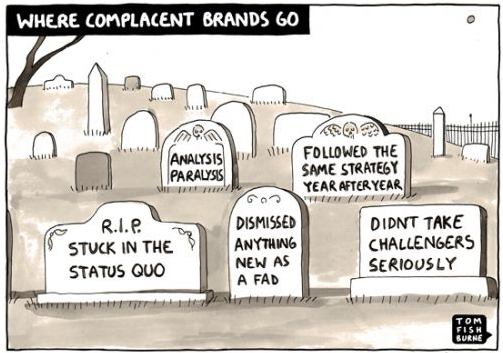|
Once upon a time there was a celebrated Finnish telecom brand called Nokia. Nokia was the king of mobiles, an undisputed market leader across the globe with instantly recognizable devices, celebrated marketing campaigns and the famous signature logo, the holding hands. Most of us, no matter what country we were living in, had a Nokia as our first mobile. In 2007 Nokia had almost 35% of the mobile and 50% of the smartphone market, it was perceived as one of the most valuable and admired brands in the world.  Today, Nokia is a far cry from where the brand once was and its new owner Microsoft has just announced that they will drop the Nokia brand from smartphones. How could it all go so wrong? There are several causes of the downfall and it can be an important lesson to learn also for brands in other industries. The rise and fall of a brand can be difficult to predict and almost impossible to stop when the snowball has started to roll. Looking at Nokia, despite being a dominant market leader the company failed to recognize the drastic change in the industry and rapid transition of mobiles into smartphones. Being a company dominated by engineers, it focused more on hardware than software, which was an underestimation that proved fatal. As a comparison, when Steve Jobs launched the iPhone in 2007, Apple understood that design was important but that the rest was all about the software and attractive applications. Nokia’s choice of future operating system turned out to be a big mistake, first going with Symbian and then changing to Windows instead of launching Android as most of their competitors did, except Apple. It also appears that Nokia’s management spent too much time with internal politic and was not agile enough when it came to important decision making. They – and their teams – seem to not have prioritized to keep an ear on the ground, recognizing what was happening with the market and their customers. As a final straw, Nokia clearly overestimated the strength of its brand. Competing in a high tech industry means that customers will expect constant innovation from your brand to stay loyal and Nokia did not manage to deliver on that. Instead it was perceived as behind its competitors and quickly lost market shares to Samsung, Apple and HTC. Image concerned customers did not want to be seen with a device that was not perceived as “cool” anymore, but more associated with bus drivers and low income classes. Once an aspirational brand, Nokia’s image quickly faded away and the company was forced to close down its flagship stores all over the world . When the Microsoft acquisition of Nokia was finalised in April 2014, an era was coming to an end. Recently it was announced that the Nokia brand would be dropped from its Lumia smartphones but continue to feature on lower-priced feature phones for the next coming years. It's sadly the end of the road of Nokia as a mobile leader. Once Finland’s most beloved company and one of the world’s most prominent brands will soon end up in oblivion. A learning from the case of Nokia is, never become a complacent brand. Will it be possible to rebuild the Nokia brand? Maybe. Nokia comes from a background as a conglomerate with many crucial mobile industry patents up its sleeves. Clues to their future lie within the new strategy and management. Lets see what 2015 will bring and if there is a chance for a revival of the brand. Image sources: nokia.com, journeyguy.com, tom.fishburne, techinasia.com, techcrunch.com. |
AuthorRosie Kropp, Categories
All
Archives
March 2015
|






 RSS Feed
RSS Feed